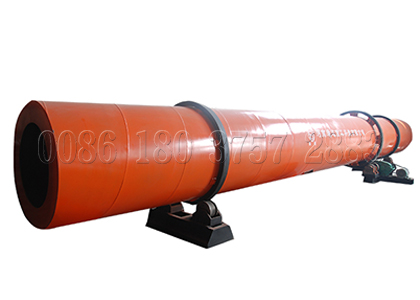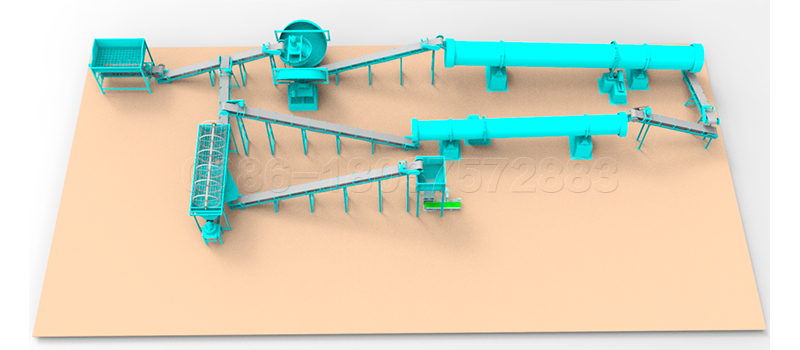The organic fertilizer production line includes many equipment. Most users are familiar with the dryer, so how much do you know about the cooler? Let’s follow the organic fertilizer equipment manufacturer to see its production process.

Dry and wet materials are fed into the hopper by belt conveyor or bucket elevator, and then enter the feeding end through the feeder of the hopper through the feed pipe. The slope of the feed pipe shall be greater than the natural inclination of the material, so that the material can flow into the cooler smoothly.
The cooler cylinder is a rotating cylinder slightly inclined to the horizontal line. When the material is added from the high end, the heat carrier flows out from the low end, contacts with the material countercurrent, and part of the heat carrier flows into the cylinder together with the material. With the rotation of the cylinder, the material moves to the lower end under the action of gravity.
In the process of advancing in the cylinder, the hot material can be cooled directly or indirectly through the heat carrier, and then sent out by belt conveyor or screw conveyor at the discharge end. The cooler is the equipment required for the production of biological fertilizer.
The inner wall of the cylinder of the drum cooler is equipped with a reading plate. Its function is to pick up and disperse the materials, increase the contact surface between the materials and the air flow, so as to improve the cooling speed and move the materials forward.
The cooling body is generally divided into cold air, etc. After the heating medium passes through the cooler, a cyclone is generally required to capture the substances carried in the gas. If it is necessary to further reduce the dust content of waste gas, it shall be discharged after passing through bag type dust collector or wet dust collector.
The drum cooler needs to be installed in cooperation with the drum granulation process. Elevation and horizontal position, inclined installation. Generally, the inclination angle is 2-5 degrees (users can adjust it as needed). The support and transmission frame of the machine have anchor holes, which can be installed on the concrete.
More detailed info, welcome go to https://compostturnermachine.com/



